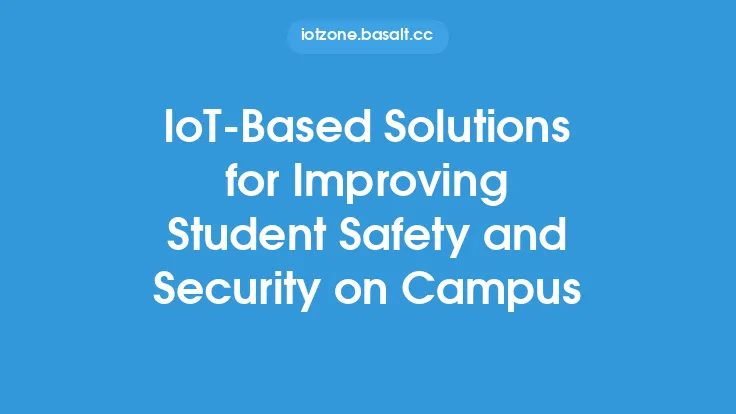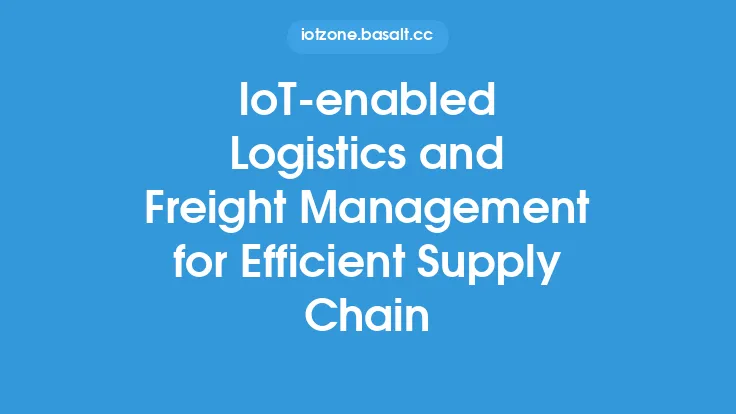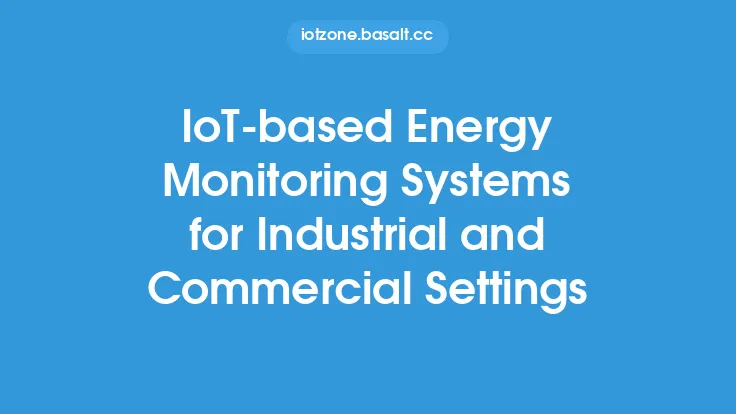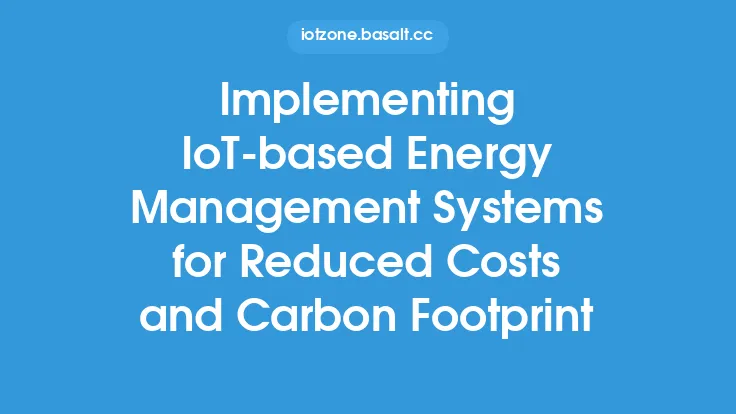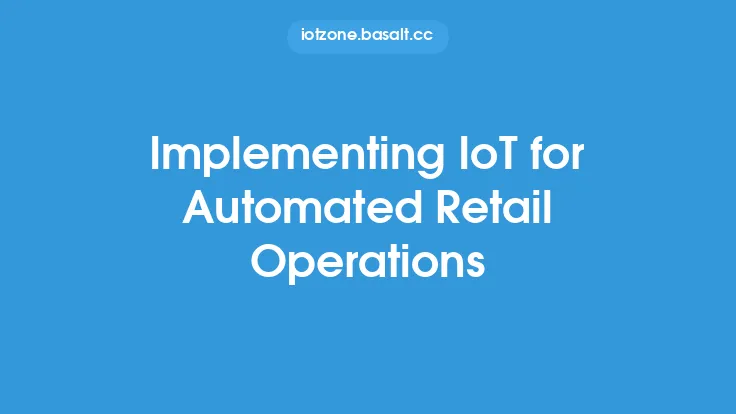The retail industry has undergone significant transformations in recent years, driven by the need for efficient logistics and delivery systems. The rise of e-commerce has led to an increase in demand for fast and reliable delivery options, putting pressure on retailers to optimize their supply chains. This is where IoT-based solutions come into play, offering a range of benefits that can help retailers streamline their logistics and delivery operations.
Introduction to IoT in Retail Logistics
IoT, or the Internet of Things, refers to the network of physical devices, vehicles, and other items that are embedded with sensors, software, and connectivity, allowing them to collect and exchange data. In the context of retail logistics, IoT-based solutions can be used to track and monitor inventory, vehicles, and packages in real-time, enabling retailers to make data-driven decisions and improve their overall efficiency. By leveraging IoT technologies such as GPS, RFID, and cellular networks, retailers can gain greater visibility into their supply chains and make adjustments as needed to ensure timely and cost-effective delivery.
Key Components of IoT-Based Solutions for Retail Logistics
There are several key components that make up an IoT-based solution for retail logistics, including:
- Sensors and Tracking Devices: These are used to monitor the location, temperature, and condition of packages and inventory in real-time. Sensors can be attached to packages, pallets, or vehicles, and can transmit data back to a central hub or cloud-based platform.
- Communication Networks: These enable the transmission of data between sensors, tracking devices, and the central hub or cloud-based platform. Cellular networks, Wi-Fi, and Bluetooth are common communication protocols used in IoT-based solutions for retail logistics.
- Data Analytics and Visualization: This is the process of analyzing and interpreting the data collected from sensors and tracking devices. Data analytics and visualization tools can help retailers identify trends, patterns, and areas for improvement in their logistics and delivery operations.
- Integration with Existing Systems: IoT-based solutions for retail logistics often need to be integrated with existing systems, such as enterprise resource planning (ERP) software, transportation management systems (TMS), and warehouse management systems (WMS).
Benefits of IoT-Based Solutions for Retail Logistics
The benefits of IoT-based solutions for retail logistics are numerous, and include:
- Improved Visibility and Tracking: IoT-based solutions provide real-time visibility into the location and condition of packages and inventory, enabling retailers to track and monitor their supply chains more effectively.
- Increased Efficiency and Productivity: By automating many of the manual processes involved in logistics and delivery, IoT-based solutions can help retailers streamline their operations and reduce costs.
- Enhanced Customer Experience: IoT-based solutions can help retailers provide faster and more reliable delivery options, which can lead to increased customer satisfaction and loyalty.
- Reduced Costs and Improved Profitability: By optimizing their logistics and delivery operations, retailers can reduce their costs and improve their profitability.
Real-World Applications of IoT-Based Solutions for Retail Logistics
There are many real-world applications of IoT-based solutions for retail logistics, including:
- Cold Chain Monitoring: IoT-based solutions can be used to monitor the temperature and condition of perishable goods, such as food and pharmaceuticals, during transportation and storage.
- Package Tracking and Monitoring: IoT-based solutions can be used to track and monitor packages in real-time, enabling retailers to provide customers with accurate and up-to-date information about the status of their orders.
- Vehicle Tracking and Fleet Management: IoT-based solutions can be used to track and monitor vehicles, enabling retailers to optimize their routes and reduce fuel consumption.
- Warehouse Management and Inventory Control: IoT-based solutions can be used to monitor and manage inventory levels, enabling retailers to optimize their stock levels and reduce waste.
Challenges and Limitations of IoT-Based Solutions for Retail Logistics
While IoT-based solutions for retail logistics offer many benefits, there are also several challenges and limitations that need to be considered, including:
- Security and Privacy Concerns: IoT-based solutions can be vulnerable to cyber attacks and data breaches, which can compromise the security and privacy of customer data.
- Interoperability and Integration: IoT-based solutions often need to be integrated with existing systems, which can be challenging and require significant investment in time and resources.
- Cost and ROI: IoT-based solutions can be expensive to implement and maintain, and may require significant investment in hardware, software, and personnel.
- Scalability and Flexibility: IoT-based solutions need to be scalable and flexible to accommodate changing business needs and requirements.
Future of IoT-Based Solutions for Retail Logistics
The future of IoT-based solutions for retail logistics is exciting and rapidly evolving. As technology continues to advance and improve, we can expect to see even more innovative and effective solutions for logistics and delivery. Some of the trends and developments that are likely to shape the future of IoT-based solutions for retail logistics include:
- Increased Use of Artificial Intelligence and Machine Learning: AI and ML can be used to analyze data and make predictions about logistics and delivery operations, enabling retailers to optimize their supply chains and improve their efficiency.
- Greater Use of Autonomous Vehicles and Drones: Autonomous vehicles and drones can be used to transport packages and inventory, reducing the need for human labor and improving delivery times.
- More Focus on Sustainability and Environmental Impact: IoT-based solutions can be used to reduce waste and improve sustainability in logistics and delivery operations, enabling retailers to minimize their environmental impact and improve their social responsibility.
